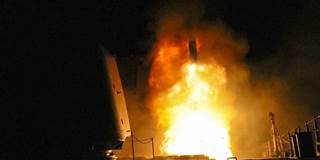OnPoint Subscriber Exclusive
The Big Picture brings together a range of PS commentaries to give readers a comprehensive understanding of topics in the news – and the deeper issues driving the news. The Big Question features concise contributor analysis and predictions on timely topics.

Striking Syria
Bashar al-Assad’s regime does not seem to have been influenced by the latest Western military response to its use of chemical weapons on rebel-held areas. But with no one developing a viable strategy for peace, the risk of a war that draws in the Middle East’s regional rivals is mounting.